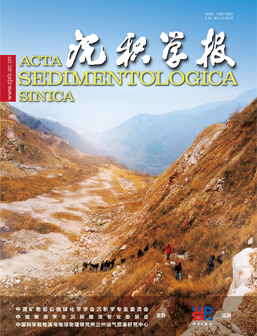Sedimentary Response and Global Correlation of the Late Pennsylvanian Warming Event
doi: 10.14027/j.issn.1000-0550.2023.141
- Received Date: 2023-11-23
- Available Online: 2024-01-16
-
Key words:
- Late Paleozoic Ice Age /
- warming event /
- sedimentary facies /
- depositional process /
- sedimentary cycle
Abstract: [Objective] The Late Paleozoic Ice Age is the most remarkable icehouse period since the flourish of the terrestrial ecosystem and is characterized by multiple discrete glacial and interglacial periods. Several global warming events occurred during the Late Paleozoic Ice Age, which have received wide attention in recent years. An abrupt negative excursion in carbon isotopes (δ13C) has been recorded near the Late Pennsylvanian Kasimovian-Gzhelian Boundary (KGB), accompanied by significant global warming. The KGB warming event under the background of interglacial period of the icehouse climate is of great interest, but the study on this warming event is still in the initial stage. [Methods] In this paper, detailed sedimentological and comprehensive stratigraphic studies were carried out on the ~20-m-thick strata across the KGB in the Naqing, Shanglong, and Narao sections of the Luodian Basin, South China. [Results and Discussions] Four sedimentary lithofacies are identified, including the lime mudstone facies, bioclastic wacke- to packstone facies, normal-graded packstone facies, and dark calcareous mudstone facies, indicating a deep-water slope environment with frequent sea-level fluctuations. The newly obtained carbonate δ13C record from the Shanglong section can be well compared with the previously published records from the Naqing and Narao sections, and the negative excursion in δ13C across the KGB is recorded around the world. Three cycles of paleo-water-depth variation at the Heckelina eudoraensis zone, Idiognathodus naraoensis zone, and the bottom of H. simulator zone in the study interval show a similar pace with the astronomical cycles and can be correlated to those of the Mid-continent from North America. [Conclusions] The studied successions of the Luodian Basin provide an important reference for the study of the KGB warming event.
| Citation: | Sedimentary Response and Global Correlation of the Late Pennsylvanian Warming Event[J]. Acta Sedimentologica Sinica. doi: 10.14027/j.issn.1000-0550.2023.141 |






 DownLoad:
DownLoad: